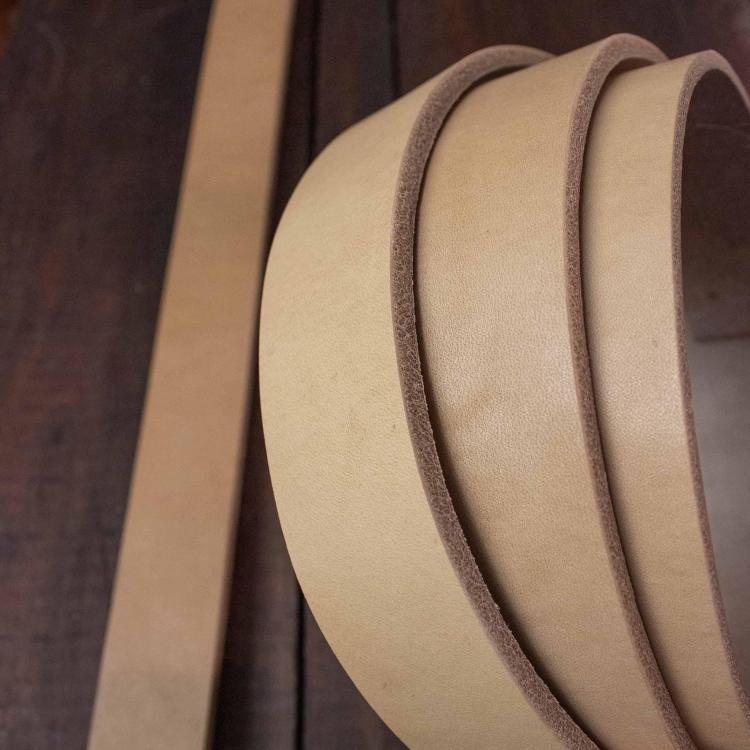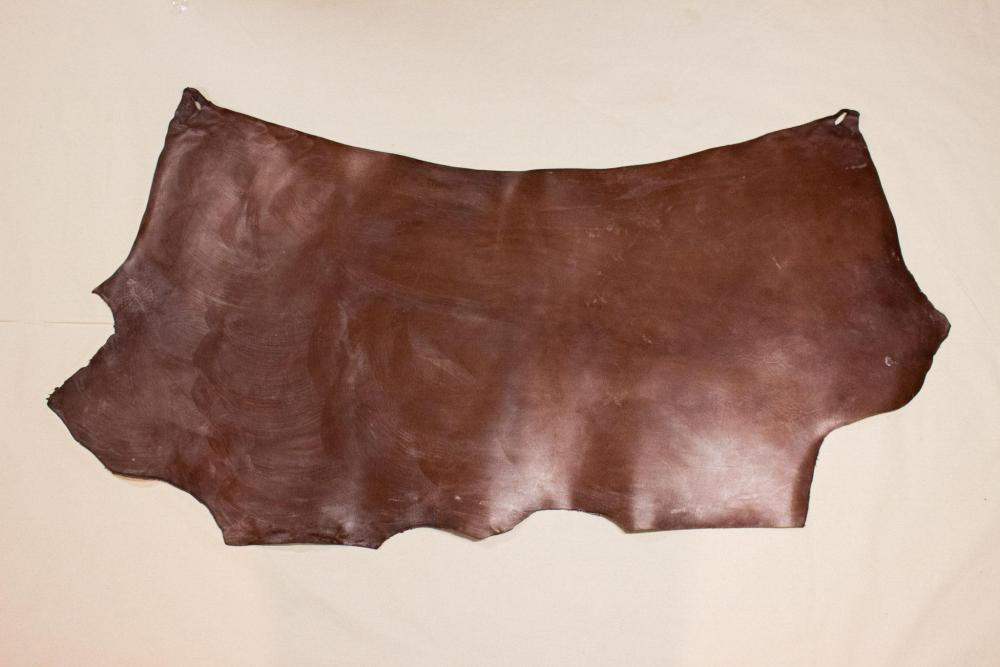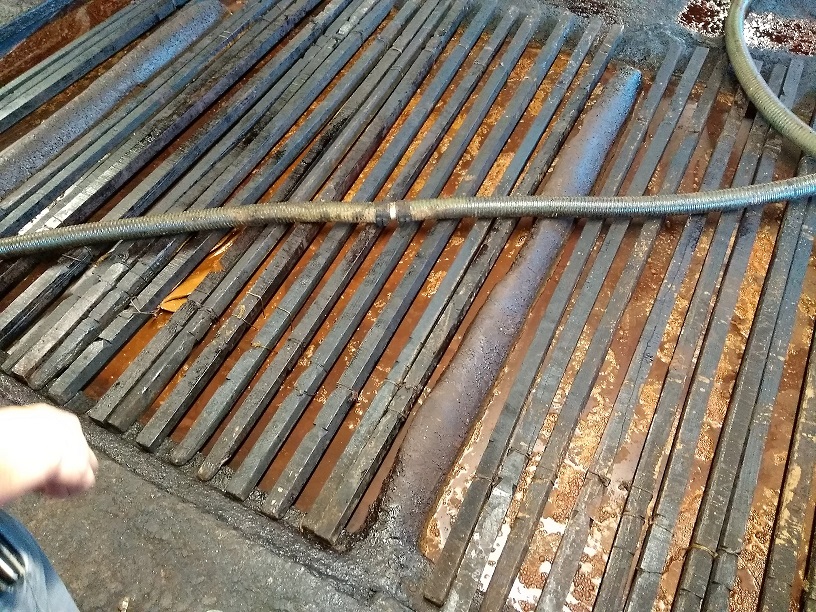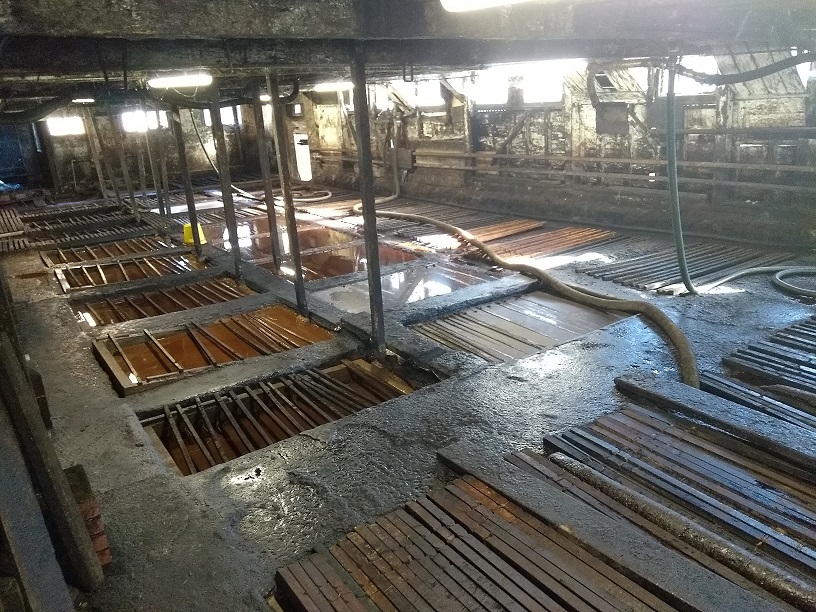Search the Community
Showing results for tags 'bakers'.
-
J&FJ Baker & Co Oak Bark and Veg Tan equestrian leathers are now available in the US! Carmine Jack Leather has Bakers traditional oak bark bridle, harness, and stirrup leathers in a number of different colors. We also have some of their veg tan offerings including their panel hides and bag hides (double back hides averaging (34sqft) as well as their corrected grain veg tan harness leathers which are a big hit in Japan. We have straps available for sale on our website but working on getting everything else up there. The backs, butts, and whole hides we offer are all done through direct invoicing so please send us a message to get an order started.
-
Definitely not the first on this board to visit, and probably not the first to post about it, but today I visited the semi-legendary tannery J & FJ Baker's of Colyton, Devon. For the uninitiated they are the last oak-bark pit tannery in England, and possibly Europe. This isn't some rediscovered or retro skill -- the company has been operating essentially unchanged since there was a tan yard in every village. Apologies in advance for the limited and low quality photos. I'm not much of a photographer, I only had my phone with me and we were on a time-scale so I didn't fancy looking like a complete tourist and only took a few snaps as we went round trying really hard not to fall into the liming tank. Baker's has been owned and run by the same family for about 140 years. Today's company director is the 5th Mr Parr. However nobody knows how long the tannery has been here. (There was a tan-yard on this site in Roman times. That's nearly 2000 years, history fans.) The tannery operates in a maze of buildings on the banks of the River Coly, from which it draws water and motive power. (The hides are are agitated in the tan pits by the water wheel which runs in a leat off the river.) These range everything from ancient stone and brick to wriggly tin sheds you might find on a dairy farm. The site has clearly been built and evolved over time, as needs changed to meet a fickle market. One thing that is constant is the impression of age -- a combination of wear from centuries of honest, hard graft and grease which covers every surface. This is what "vintage" dealers aim at and completely miss. Nothing around this site looks old because it's had orange paint daubed on it, been hit with a hammer or rubbed with wire wool -- it's simply been doing its job since it was new. If you've spent time at an industrial site you'll probably know what I'm talking about. Hides arrive as "wet blues" from the slaughterhouse-- just as the got sliced off the cow, except they're covered in salt so they don't rot before they get tanned. They're still hairy and bloody, but that won't last long. First they go into the liming pits. This is an alkali bath which dissolves the fat and little scraps of flesh, loosens the hair, and plumps up the skin. The limed hides go through a couple of machines which dehair and deflesh them, then they're passed to a man who removes any stubborn bits that shouldn't be there. He uses a large knife in a scraping motion. Before machines came about all flesh and hair was removed on the fleshing beam in this way, which was tedious. At this stage it's all still rawhide. After dehairing the leather goes to the tanyard, which is the heart of the operation. Hides are hung in the pits by hand, strung from the oak beams you can see. the beams each hold two hides and fit into wooden frames, which are rocked back and forth by the vertical rods you can see, which in turn are moved by the water wheel. Hides start out in the oldest tanliquor, which is changed by pump each week for a stronger liquor until it's been through the strongest, newest liquor. Talking of tanliquor, Baker's primarily uses oak bark. They have used standard bought-in veg-tannin in the past, and still sometimes do, but these days mostly run oak bark because that's what Baker's is famous for. It's prepared separately in a series of pits underneath the tanyard, with shredded bark left to steep in water for "a while". It's encouraged to ferment before it's ready to be pumped up to the tanyard and the smell is... well let's just say it doesn't smell like a forest. Once the liquor is drained the remaining mulch is sold on as fertiliser. Tanning takes many months and exactly how long I don't know. However the average is 18 months from coming in to being ready for sale. It's this tanning which turns rawhide into leather. Freshly tanned hides are hung to dry in naturally moving air. Once dried, hides are dipped in hot grease and folded in half before they go hard. Later they are put through a hot water bath, laid flat, graded and cut. At this stage their fate is decided -- will it become shoe leather or equestrian leather? Shoulders, backs or butts? Grading is a skilled job but mostly revolves around how many flaws it has -- barbed wire scars matter a whole lot less on a shoe sole than a pair of driving reins. Hides are split to final thickness at this stage. Soling then goes to the butt store but equestrian leather goes on to be curried (dyed, dressed and treated). Most dying is done in a tumble drum these days for speed and uniformity but they still hand-colour some hides. Hides are set out on a stone slab, using a slicker to smooth, even-out and slightly polish the leather. Currying involves the rubbing in of dubbin by hand, which is a mixture of tallow, oil and wax. I didn't get any pictures of the dubbin tank but I think you could submerge an estate car inside it without too much trouble. I've alluded to shoe and equestrian leather and those are the traditional divisions but leathers from these groups is suitable for all sorts of purposes. Baker's sells shoe soling as well as specific cut components like sole blanks, toe puffs, heel stiffeners etc. It can be cut into regular shapes for a beautiful (but rather delicate) flooring material. Soling is also hot fatliquored in a tumble drum to make machinery belting. Equestrian leather is of course traditionally used for riding and driving tack but its use is largely for other goods like belts and bags. Traditional products are bridle and harness in various shades of brown, tan and black. (Some undyed stuff is made, which in England is called russet. That's the sort of thing you might use for tooling.) There's also a certain quantity of lighter weight hides like bag/girth hide, which has an obvious use. Other specialist leathers for making stirrup leathers and girth points on English saddles are available too. Traditional cuts are backs, shoulder, butts and bellies. Backs and butts are sold as pairs or half-pairs (singles). There's also a limited quantity of Russian calf coming out the tannery these days which is amazing stuff. Baker's has been through some rough patches in the past but the quality and beauty of their product is well recognised these days. They're running at full capacity, which is 80 hides per week. It's not the cheapest leather in the world but neither is it the most expensive and I think it's a bargain for what it is. Now I just have to convince my customers the same ;-) You can see some good quality shots of Baker's main products here.







